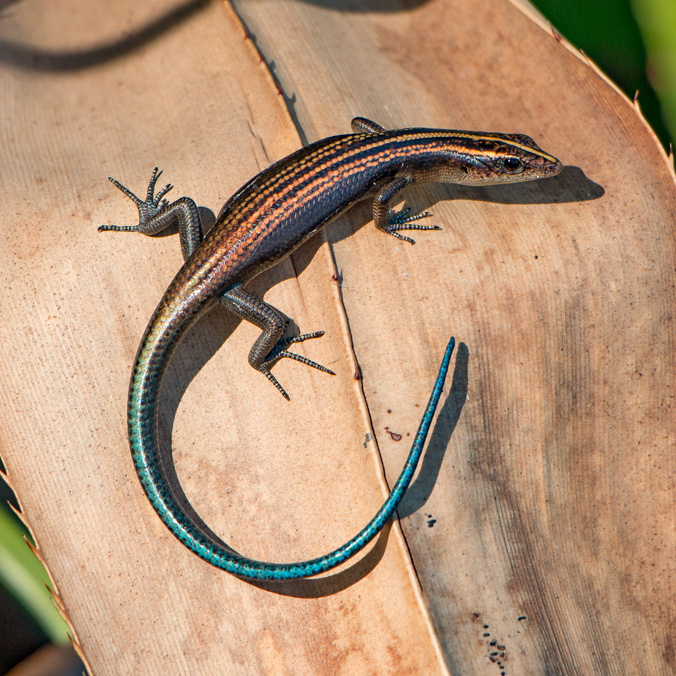
When a former student sent William Mautz, a professor emeritus of biology at the University of Hawaiʻi at Hilo, a snapshot of a lizard once thought to be extinct in Hawaiʻi—he was instantly curious.
It was a recently snapped photograph of what appeared to be an azure-tailed skink, a lizard species once commonly found in the Hawaiian Islands and only known to dwell on a tiny 10-acre islet off Molokaʻi. UH Hilo Tropical Conservation Biology and Environmental Science alumnus Aaron Mickelson sent Mautz the photo to get his expert opinion.
“I said I know what it is, but it is not supposed to be here anymore,” Mautz explained. “The little brown skinks common in Hilo backyards are a different species called the delicate skink. They may have a slate-colored tail but it is not a true blue. The azure-tailed skink also has a stripe over the top of its head.”

To confirm its existence on Hawaiʻi Island, Mautz set off on a hike to the lizard population spotted within a small grove of pandanus trees at the edge of the ocean cliffs near Nīnole on the Hāmākua Coast. Mautz recently published an article about the species’ rediscovery in Herpetological Review.
According to Mautz, the disappearance of azure-tailed skinks across the Hawaiian Archipelago throughout the past 100 years could be linked to feral cats, rats, mongoose and invasive species of ants.
“The other difficulty for cliff-edge populations of wildlife on Hawaiʻi Island is that residential property development is rapidly proceeding on the Hāmākua Coast,” Mautz said. “Newer developers favor ocean views over small farms and set landscaped houses close to the edge of the sea cliffs.”
So far, Mautz’ findings are unable to confirm if the azure-tailed skinks are restricted to pandanus tree groves and if there are other populations of the lizards elsewhere on the island.
“There is a rumored sighting of a blue-tailed skink in pandanus forest in the Kohala Mountains,” he said. “I have been searching the fragmented cliff-top pandanus groves on the Hāmākua Coast and Kohala Mountains for more lost treasure lizards, so far without luck.”

